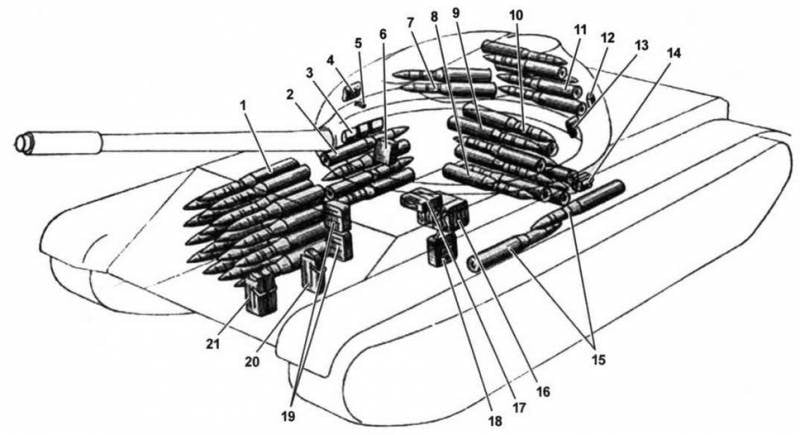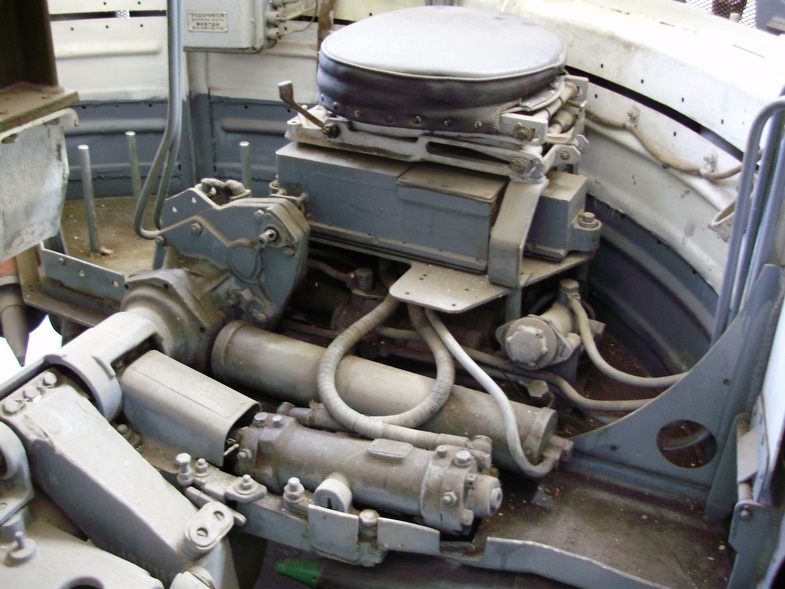That is true for any protected ammunition storage system. Any ammunition storage system, in fact. But for the tank crew, difference between "explosion going up" and "explosion going everywhere" is quite academic - and in fact, I am not certain even just a penetration by modern AT weapons (especially APFSDS penetrator) is survivable for the crew, in which case this whole discussion becomes academic.
But as you can see, ammunition in T-55 is stored all over the tank. And same is true in T-72:
T-64 and T-80 however are far worse than T-72, because not only is the ammunition outside autoloader stored all over the tank, but propellant charges within the autoloader are stored vertically:
They still have steel collar protecting the ammunition from being ignited by fragments (see below), but are far more likely to suffer direct hits. Nevertheless, in e.g. Gulf War, 90% of hits were to the turret.
In theory. In practice, "safe" propellant charge only makes it
less likely that an accidental explosion will occur. So e.g. you won't have the ammunition cooking off because somebody dropped a shell or engine caught fire. But penetration and shells exploding in enclosed space is still beyond the safety limit. The only way to prevent
that is, to my knowledge, get rid of the explosive content altogether. But railgun tanks are still way beyond technological capability...



